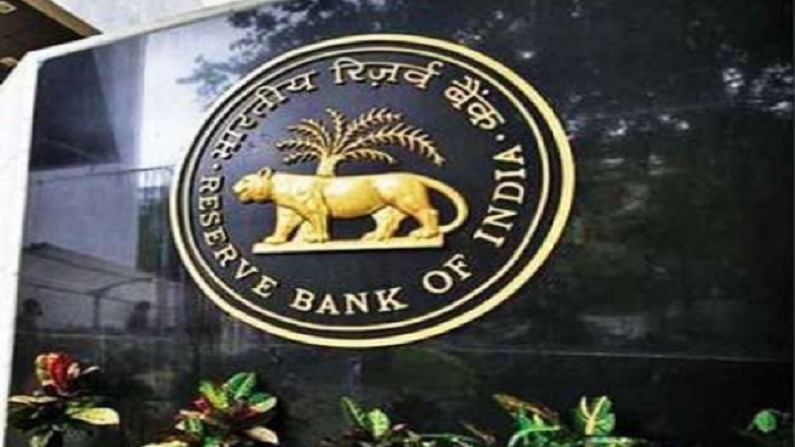RBI status quo on policy supportive of economic growth: Experts
The growth forecasts appear to be encouraging and the economic activity momentum will be further consolidated, says an expert

New Delhi: RBI’s decision to keep repo rate unchanged for the fifth time in a row is in line with the economic need to encourage growth, financial market players and experts said on April 7.
In its first monetary policy announcement for this fiscal, the Reserve Bank underlined the need to support the economy given the current situation amidst resurgence of Covid cases in the country.
The six-member Monetary Policy Committee (MPC) unanimously decided to continue with the accommodative stance as long as necessary to sustain growth on a durable basis and continue to mitigate the impact of COVID-19 on the economy.
Rajiv Sabharwal, MD and CEO, Tata Capital, said: “The growth forecasts appear to be encouraging and the economic activity momentum will be further consolidated.” The apex bank has projected the Indian economy to grow at 10.5 per cent in the current fiscal year.
Measures announced are intended to lower borrowing costs, ease financial conditions and keep liquidity supportive for credit offtake, Sabharwal said adding that the announcement ebbed worries of any early liquidity withdrawal.
On the inflation front, the RBI has projected the retail inflation to be in the range of 4.4-5.2% during the course of this year, with the first half falling in the upper band of over 5%.
Rumki Majumdar, Economist, Deloitte India, said, “As expected, the RBI has kept the policy rates stable and will likely continue holding the rates steady as there are significant risks to inflation moving up. Intermittent supply-side disruptions and gradual demand revival will keep the pressure on prices.”
The RBI has pushed more liquidity to MFIs to encourage lending to rural and SME sectors, Majumdar said, adding that credit growth has to take off rapidly to ensure sustainable capital expenditure and spending across all segments of the economy.
To nurture the still-nascent growth impulses, the RBI has felt necessary to support the continued flow of credit to the real economy. Thus, liquidity support of Rs 50,000 crore for fresh lending during 2021-22 will be provided to All India Financial Institutions (AIFIs).
The RBI will also provide Rs 25,000 crore to NABARD, Rs 10,000 crore to NHB and Rs 15,000 crore to SIDBI. Notably, special refinance facilities of Rs 75,000 crore were provided to AIFIs during April-August 2020.
Additionally, the RBI also announced Rs 1 lakh crore government securities (G-sec) acquisition programme, named G-SAP 1.0, under which it will commit upfront to a specific amount of open market purchases of G-sec as a liquidity measure.
The announcement of the much-awaited GSAP 1.0 should go a long way in quelling the bond market’s anxieties regarding the size of the central and state government borrowing programme for FY2022, N Sivaraman, MD and Group CEO, ICRA Ltd, said.
“Regardless, global factors such as US treasury yields and commodity prices, and the impact of the latter on domestic inflation, will influence yields. We expect the 10-year G-sec yield to range between 6.05 and 6.15 per cent in the next two months,” he said.
The rating firm also suggested that the CPI inflation forecast round 5% in FY22 seems to be ruling out rate cuts unless economic activity is severely disrupted by the ongoing wave of Covid-19.
Anshuman Panwar, Co-Founder, Creditas Solutions, said the first bi-monthly policy for FY22 has been on expected lines with the RBI keeping repo rate unchanged but re-affirming its commitment to maintain an accommodative stance.
“Further, RBI will now set up a committee for a comprehensive review of Asset Reconstruction Companies ARCs. I think this is a much-needed step to harness the full potential of ARCs so that the key issue of sizeable bad loans is addressed in a sustained and holistic manner. This is also crucial as economic growth revives and banks need the confidence to lend aggressively,” he added.
Dhruv Agarwala, Group CEO, Housing.com, Makaan.com and Proptiger.com, said the RBI move to hold key rates unchanged is on expected line and hoped the regulator will carefully monitor how the COVID-19 situation evolves and change its stance later in the financial year as the need arises.
Rashmi Saluja, Executive Chairperson, Religare Enterprises, said, “The key takeaway is that the central bank has kept FY22 growth projection unchanged at 10.5 per cent and exuded confidence that despite spurt in COVID cases, growth momentum can be sustained if the vaccination programme is speeded up…It is evident that RBI wants to ensure financial stability at all costs to support nascent recovery in economy and continue with its accommodative stance as long as required.”
George Alexander Muthoot, Managing Director, Muthoot Finance said RBI’s liquidity measures along with bank lending to NBFCs being extended till September 30, 2021 is an acknowledgement of the systematically important role NBFCs have played in lending to the last mile.
“Given the high uncertainty around near term growth prospects, the MPC will remain accommodative at least through the first half of FY22,” said G Murlidhar, MD & CEO, Kotak Mahindra Life Insurance.